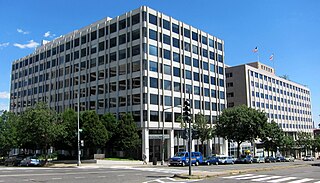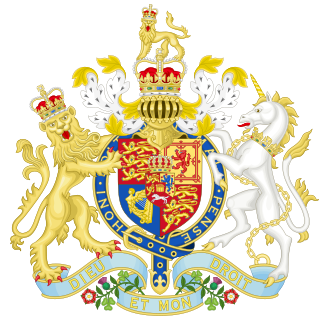Related Research Articles

The Great Famine, also known as the Great Hunger, the Famine and the Irish Potato Famine, was a period of mass starvation and disease in Ireland lasting from 1845 to 1852 that constituted a historical social crisis and subsequently had a major impact on Irish society and history as a whole. The most severely affected areas were in the western and southern parts of Ireland—where the Irish language was dominant—and hence the period was contemporaneously known in Irish as an Drochshaol, which literally translates to "the bad life" and loosely translates to "the hard times". The worst year of the famine was 1847, which became known as "Black '47". The population of Ireland on the eve of the famine was about 8.5 million, by 1901 it was just 4.4 million. During the Great Hunger, roughly 1 million people died and more than 1 million more fled the country, causing the country's population to fall by 20–25% between 1841 and 1871. Between 1845 and 1855, at least 2.1 million people left Ireland, primarily on packet ships but also on steamboats and barques—one of the greatest exoduses from a single island in history.

The English Poor Laws were a system of poor relief in England and Wales that developed out of the codification of late-medieval and Tudor-era laws in 1587–1598. The system continued until the modern welfare state emerged in the late 1940s.

In Britain and Ireland, a workhouse was an institution where those unable to support themselves financially were offered accommodation and employment. In Scotland, they were usually known as poorhouses. The earliest known use of the term workhouse is from 1631, in an account by the mayor of Abingdon reporting that "we have erected wthn [sic] our borough a workhouse to set poorer people to work".

A charitable organization or charity is an organization whose primary objectives are philanthropy and social well-being.

The Poor Relief Act 1662 was an Act of the Cavalier Parliament of England. It was an Act for the Better Relief of the Poor of this Kingdom and is also known as the Settlement Act or the Settlement and Removal Act. The purpose of the Act was to establish the parish to which a person belonged, and hence clarify which parish was responsible for him should he become in need of Poor Relief. This was the first occasion when a document proving domicile became statutory: these were called "settlement certificates".

Agnatic seniority is a patrilineal principle of inheritance where the order of succession to the throne prefers the monarch's younger brother over the monarch's own sons. A monarch's children succeed only after the males of the elder generation have all been exhausted. Agnatic seniority excludes females of the dynasty and their descendants from the succession. Contrast agnatic primogeniture, where the king's sons stand higher in succession than his brothers.

The Highland Potato Famine was a period of 19th-century Highland and Scottish history over which the agricultural communities of the Hebrides and the western Scottish Highlands saw their potato crop repeatedly devastated by potato blight. It was part of the wider food crisis facing Northern Europe caused by potato blight during the mid-1840s, whose most famous manifestation is the Great Irish Famine, but compared with its Irish counterpart, it was much less extensive and took many fewer lives as prompt and major charitable efforts by the rest of the United Kingdom ensured relatively little starvation.

The Poor Law Amendment Act 1834 (PLAA) known widely as the New Poor Law, was an Act of the Parliament of the United Kingdom passed by the Whig government of Earl Grey denying the right of the poor to subsistence. It completely replaced earlier legislation based on the Poor Relief Act 1601 and attempted to fundamentally change the poverty relief system in England and Wales. It resulted from the 1832 Royal Commission into the Operation of the Poor Laws, which included Edwin Chadwick, John Bird Sumner and Nassau William Senior. Chadwick was dissatisfied with the law that resulted from his report. The Act was passed two years after the Representation of the People Act 1832 which extended the franchise to middle-class men. Some historians have argued that this was a major factor in the PLAA being passed.

Poverty reduction, poverty relief, or poverty alleviation is a set of measures, both economic and humanitarian, that are intended to permanently lift people out of poverty. Measures, like those promoted by Henry George in his economics classic Progress and Poverty, are those that raise, or are intended to raise, ways of enabling the poor to create wealth for themselves as a conduit of ending poverty forever. In modern times, various economists within the Georgism movement propose measures like the land value tax to enhance access to the natural world for all. Poverty occurs in both developing countries and developed countries. While poverty is much more widespread in developing countries, both types of countries undertake poverty reduction measures.
In England and Wales, an extra-parochial area, extra-parochial place or extra-parochial district was a geographically defined area considered to be outside any ecclesiastical or civil parish. Anomalies in the parochial system meant they had no church or clergymen and were therefore exempt from payment of poor or church rates and usually tithes. They were formed for a variety of reasons, often because an area was unpopulated or unsuitable for agriculture, but also around institutions and buildings or natural resources. Extra-parochial areas caused considerable problems when they became inhabited as they did not provide religious facilities, local governance or provide for the relief of the poor. Their status was often ambiguous and there was demand for extra-parochial areas to operate more like parishes. Following the introduction of the New Poor Law, extra-parochial areas were effectively made civil parishes by the Extra-Parochial Places Act 1857 and were eliminated by the Poor Law Amendment Act 1868. This was achieved either by being integrated with a neighbouring or surrounding parish, or by becoming a separate civil parish if the population was high enough.

The Andover workhouse scandal of the mid-1840s exposed serious defects in the administration of the English 'New Poor Law'. It led to significant changes in its central supervision and to increased parliamentary scrutiny. The scandal began with the revelation in August 1845 that inmates of the workhouse in Andover, Hampshire, England were driven by hunger to eat the marrow and gristle from bones which they were to crush to make fertilizer. The inmates' rations set by the local Poor Law guardians were less than the subsistence diet decreed by the central Poor Law Commission (PLC), and the master of the workhouse was diverting some of the funds, or the rations, for private gain. The guardians were loath to lose the services of the master, despite this and despite allegations of the master's drunkenness on duty and sexual abuse of female inmates. The commission eventually exercised its power to order dismissal of the master, after ordering two enquiries by an assistant-commissioner subject to a conflict of interest; the conduct of the second led to more public inquiry and drew criticism.

The Poor Relief Act 1601 was an Act of the Parliament of England. The Act for the Relief of the Poor 1601, popularly known as the Elizabethan Poor Law, the "43rd Elizabeth", or the "Old Poor Law", was passed in 1601 and created a poor law system for England and Wales.

In English and British history, poor relief refers to government and ecclesiastical action to relieve poverty. Over the centuries, various authorities have needed to decide whose poverty deserves relief and also who should bear the cost of helping the poor. Alongside ever-changing attitudes towards poverty, many methods have been attempted to answer these questions. Since the early 16th century legislation on poverty enacted by the Parliament of England, poor relief has developed from being little more than a systematic means of punishment into a complex system of government-funded support and protection, especially following the creation in the 1940s of the welfare state.
From the reign of Elizabeth I until the passage of the Poor Law Amendment Act 1834 relief of the poor in England was administered on the basis of a Poor Relief Act 1601. From the start of the nineteenth century the basic concept of providing poor relief was criticised as misguided by leading political economists and in southern agricultural counties the burden of poor-rates was felt to be excessive (especially where poor-rates were used to supplement low wages. Opposition to the Elizabethan Poor Law led to a Royal Commission on poor relief, which recommended that poor relief could not in the short term be abolished; however it should be curtailed, and administered on such terms that none but the desperate would claim it. Relief should only be administered in workhouses, whose inhabitants were to be confined, 'classified' and segregated. The Poor Law Amendment Act 1834 allowed these changes to be implemented by a Poor Law Commission largely unaccountable to Parliament. The act was passed by large majorities in Parliament, but the regime it was intended to bring about was denounced by its critics as un-Christian, un-English, unconstitutional, and impracticable for the great manufacturing districts of Northern England. The Act itself did not introduce the regime, but introduced a framework by which it might easily be brought in.
Agostini v. Felton, 521 U.S. 203 (1997), is a landmark decision of the Supreme Court of the United States. In this case, the Court overruled its decision in Aguilar v. Felton (1985), now finding that it was not a violation of the Establishment Clause of the First Amendment for a state-sponsored education initiative to allow public school teachers to instruct at religious schools, so long as the material was secular and neutral in nature and no "excessive entanglement" between government and religion was apparent. This case is noteworthy in a broader sense as a sign of evolving judicial standards surrounding the First Amendment, and the changes that have occurred in modern Establishment Clause jurisprudence.
Social work as a profession dates back to years ago, with the first social welfare agencies appearing in urban areas in the 1800s. It has its roots in the attempts of society at large to deal with the problem of poverty and inequality. Social work is intricately linked with the idea of charity work, but must be understood in broader terms. The concept of charity goes back to ancient times, and the practice of providing for the poor has roots in all major world religions.
The Historiography of the Poor Laws can be said to have passed through three distinct phases. Early historiography was concerned with the deficiencies of the Old Poor Law system, later work can be characterized as an early attempt at revisionism before the writings of Mark Blaug present a truly revisionist analysis of the Poor Law system.
Legal Services Corp. v. Velazquez, 531 U.S. 533 (2001), is a decision of the Supreme Court of the United States concerning the constitutionality of funding restrictions imposed by the United States Congress. At issue were restrictions on the Legal Services Corporation (LSC), a private, nonprofit corporation established by Congress. The restrictions prohibited LSC attorneys from representing clients attempting to amend existing welfare law. The case was brought by Carmen Velazquez, whose LSC-funded attorneys sought to challenge existing welfare provisions since they believed that it was the only way to get Velazquez financial relief.
Chronic hunger has affected a sizable proportion of the UK's population throughout its history. Following improved economic conditions that followed World War II, hunger became a less pressing issue. Yet since the 2007–2008 world food price crisis that began in late 2006 and especially since the Great Recession, long term hunger began to return as a prominent social problem. Albeit only affecting a small minority of the UK's population, by December 2013, according to a group of doctors and academics writing in the British Medical Journal, hunger in the UK had reached the level of a "public health emergency".

The Board of Guardians for the Relief of the Jewish Poor or, as it is most generally known, the Jewish Board of Guardians, was a charity established by the upper class Jewish community in the East End of London in 1859. The board sought to provide relief for Jewish immigrants and soon became the central provider of relief for the Jewish poor in London.
